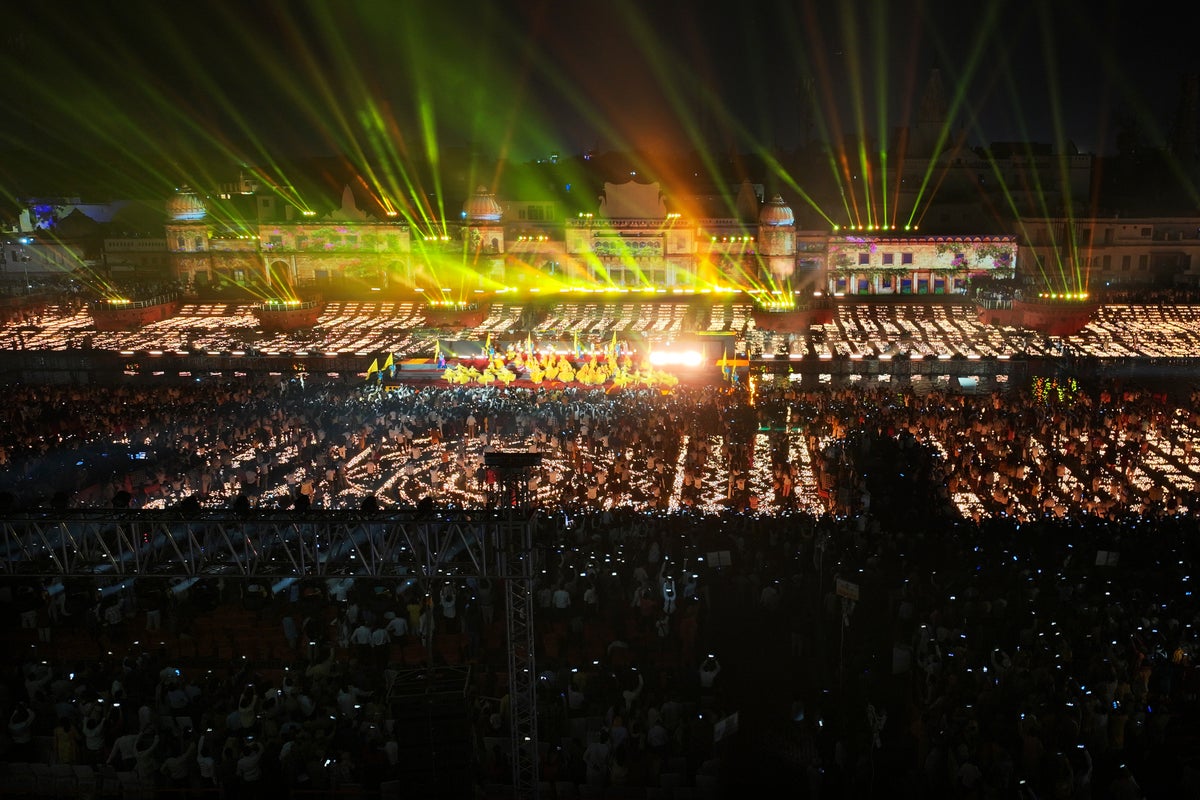
A priest stands with folded hands praying toward the rising sun on the banks of the Saryu River in Ayodhya in the northern Indian state of Uttar Pradesh. Nearby, a group of women take a dip in the river dressed in their saris while a barber trims the mustache of a shirtless man on the bank.
Similar scenes have played out at this spot for hundreds of years. Ayodhya is an ancient city that Hindus believe was the birthplace of their beloved deity Lord Rama.
It’s early morning on Wednesday, Oct. 30, the day before Diwali, the biggest of the Hindu festivals.
According to the Hindu epic Ramayana, when Rama retuned home to Ayodhya after 14 years in exile with his wife Sita and brother Laxmana, its citizens lit lamps to welcome them. Diwali, which means an array of lights, celebrates Rama’s homecoming. It also symbolizes the victory of good over evil.
Millions of Hindus across the country light their homes with oil lamps or festive electric lights on the new-moon day. They distribute sweets, burst firecrackers and shop for gold and household appliances during the five-day festivities, with Diwali on the third day.
What was once a private celebration with family and friends is increasingly public, and it is nowhere more evident than in Ayodhya.
Since 2017, the Uttar Pradesh state government has organized Deepotsav, a celebration that includes drones and laser lights, on the eve of Diwali in Ayodhya.
Last year, 2.2 million oil lamps were lit on the banks of the Saryu River, setting a Guinness World Record. This year, the state broke its own record by lighting 2.51 million lamps.
Actors playing Rama, Sita and Laxmana were brought in by helicopter. They stood on a carpeted open area while the state’s Chief Minister Yogi Adityanath and other senior officials offered prayers. During the ceremony, another helicopter showered flower petals on them. People watched a laser show as they stood among the rows of burning oil lamps, recording the experience on their phones.







